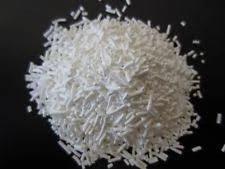
thickening agent used in cooking
Understanding Thickening Agents Used in Cooking
Thickening agents are essential components in the culinary world, playing a crucial role in enhancing the texture and consistency of various dishes. They help transform liquids into luscious sauces, soups, and gravies, adding depth and richness to recipes. In this article, we will explore different types of thickening agents, their functions, and how to use them effectively in cooking.
Types of Thickening Agents
1. Starches One of the most common thickening agents, starches derived from sources such as corn, potatoes, and wheat provide structure and stability to food. Cornstarch, for example, is often used to thicken sauces and soups. When mixed with a cold liquid and then heated, the starch granules swell, absorb water, and create a thickened mixture. However, it’s important to remember that starches can break down when overcooked, leading to a thinner consistency.
2. Flours Similar to starches, flours like all-purpose flour can be used as a thickening agent. When using flour as a thickener, it’s essential to create a roux—a mixture of equal parts flour and fat (such as butter) cooked together before adding liquid. This process not only prevents clumping but also imparts a nutty flavor to the dish.
3. Gelatin Gelatin is a protein-based thickening agent derived from animal collagen, commonly used in desserts like panna cotta and jellies. It requires soaking in cold water to bloom before being dissolved in hot liquid. Unlike starches, gelatin provides a unique, silky texture and can create a firm, not just a thickened, consistency.
4. Agar-Agar A vegetarian alternative to gelatin, agar-agar is derived from red algae. It is a powerful thickener and gelling agent, able to set liquids at room temperature. Like gelatin, agar-agar must be boiled to activate its thickening properties, making it an excellent choice for both sweet and savory dishes.
thickening agent used in cooking

5. Pectin Commonly associated with making jams and jellies, pectin is a plant-based thickening agent that naturally occurs in fruits. It’s particularly effective in thickening fruit sauces and preserves, and it requires sugar and acid to gel properly.
6. Xanthan Gum A popular thickening agent in gluten-free cooking, xanthan gum is produced through fermentation. It can be used in small amounts to thicken sauces or dressings without changing the flavor. Xanthan gum is particularly useful because it thickens at both hot and cold temperatures, making it versatile for various applications.
Usage Tips
To achieve the best results with thickening agents, consider the following tips
- Temperature Matters Most starches need to be heated to activate their thickening abilities. Always add them to hot liquids, keeping in mind that constant stirring will help prevent lumps. - Gradual Addition When adding a thickener, do so gradually while whisking continuously. This technique ensures an even distribution and prevents clumping. - Testing Consistency Remember that liquids will thicken further as they cool, so aim for a slightly thinner consistency while still cooking. - Acidic Ingredients If your recipe contains acidic ingredients like tomatoes or vinegar, be cautious with starch-based thickeners. High acidity can weaken their thickening power and create a thinner consistency than expected.
Conclusion
Thickening agents are indispensable tools in the kitchen, lending structure and richness to a variety of dishes. By understanding the different types of thickening agents and how to use them effectively, home cooks can elevate their culinary creations. Whether you opt for traditional starches, versatile gelatin, or innovative alternatives like xanthan gum, mastering these agents opens a world of possibilities in cooking, allowing for greater experimentation and creativity in the kitchen.
-
Pure Sodium Dichloroisocyanurate Dihydrate | Powerful DisinfectantNewsAug.29,2025
-
Industrial Chemicals: Quality & Purity for Every IndustryNewsAug.28,2025
-
Nitrile Rubber Honoring Strict Production StandardsNewsAug.22,2025
-
Aspartame Ingredients Honoring Food Safety ValuesNewsAug.22,2025
-
Fertilizer for Balanced Plant NutritionNewsAug.22,2025
-
Cyanide Gold Processing with High Purity AdditivesNewsAug.22,2025
-
Formic Acid in Textile Dyeing ApplicationsNewsAug.22,2025
Hebei Tenger Chemical Technology Co., Ltd. focuses on the chemical industry and is committed to the export service of chemical raw materials.
-

view more DiethanolisopropanolamineIn the ever-growing field of chemical solutions, diethanolisopropanolamine (DEIPA) stands out as a versatile and important compound. Due to its unique chemical structure and properties, DEIPA is of interest to various industries including construction, personal care, and agriculture. -

view more TriisopropanolamineTriisopropanolamine (TIPA) alkanol amine substance, is a kind of alcohol amine compound with amino and alcohol hydroxyl, and because of its molecules contains both amino and hydroxyl. -

view more Tetramethyl Thiuram DisulfideTetramethyl thiuram disulfide, also known as TMTD, is a white to light-yellow powder with a distinct sulfur-like odor. It is soluble in organic solvents such as benzene, acetone, and ethyl acetate, making it highly versatile for use in different formulations. TMTD is known for its excellent vulcanization acceleration properties, which makes it a key ingredient in the production of rubber products. Additionally, it acts as an effective fungicide and bactericide, making it valuable in agricultural applications. Its high purity and stability ensure consistent performance, making it a preferred choice for manufacturers across various industries.





